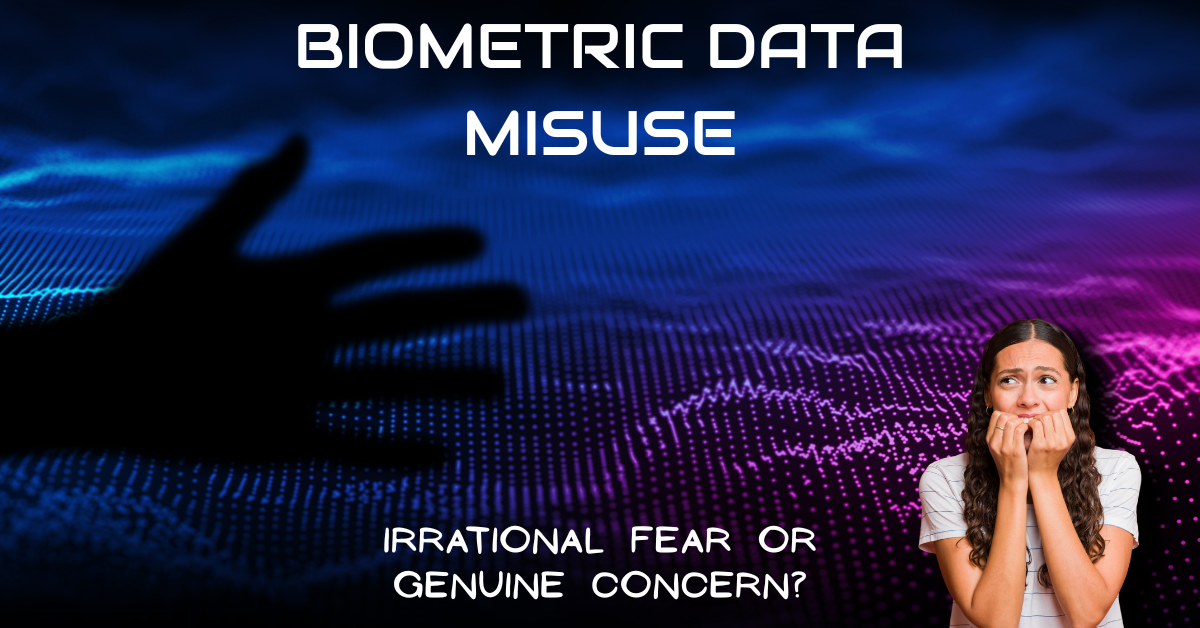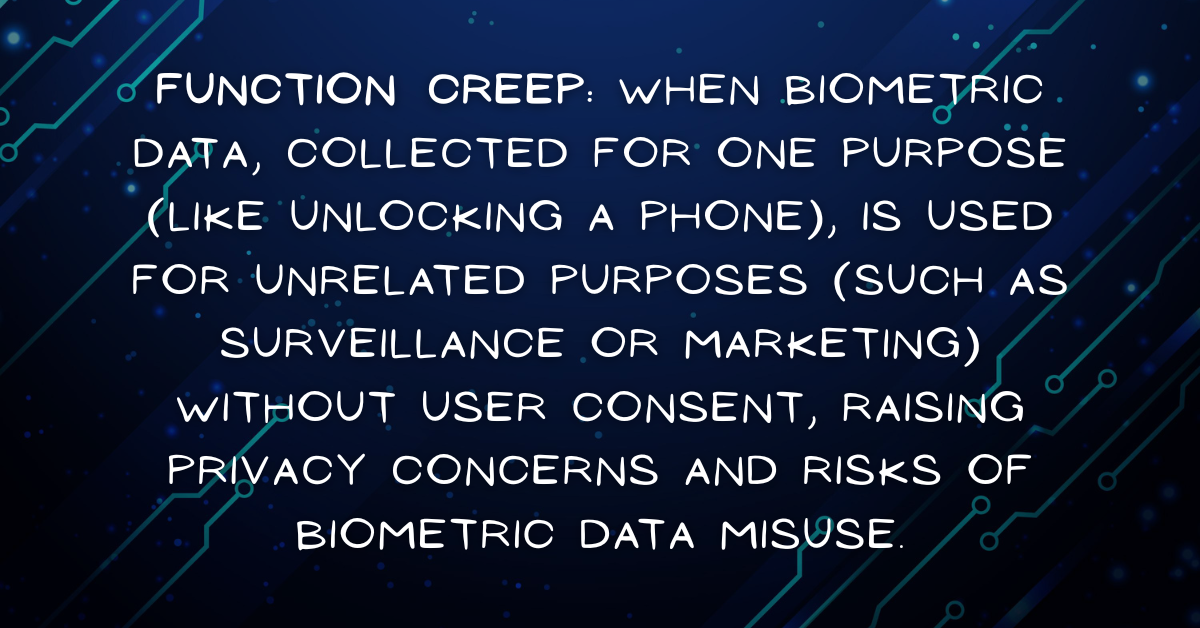Categories
As biometric technology becomes ubiquitous—unlocking devices with a glance or securing borders with a scan—its convenience is transformative. Yet, the specter of biometric data misuse looms large, sparking debates over privacy and security.
Are these concerns rooted in legitimate risks, or are they amplified by overzealous caution? This article explores the advantages, dangers, and safeguards of biometrics, charting a course to leverage its potential while upholding trust.

Biometric data encompasses unique traits that distinguish individuals, making it both a potent identifier and a target for biometric data misuse.
Biometric solutions have transitioned from specialized applications to everyday tools, intensifying scrutiny over data misuse.
Facial recognition and fingerprint scanners in phones and wearables.
Biometric passports and automated immigration kiosks.
Time-tracking via fingerprints or face scans.
Retailers use biometrics for payments or security.
The unchangeable and personal nature of biometric data amplifies its exposure to misuse. Below, we dissect the key threats, highlighting why data misuse resonates as a critical issue.
Biometric repositories are prime targets for hackers due to their sensitive contents. A single breach can compromise millions of records, enabling identity theft or illicit access. For instance, the 2019 Suprema breach exposed fingerprints and other biometric details of over 1 million individuals, highlighting weaknesses in even high-security systems.
Once stolen, biometric data can be exploited to forge identities, and its fixed nature leaves victims perpetually at risk. Unlike credit cards, which can be replaced, breached biometrics offer no remedy, intensifying the consequences of biometric data misuse.
Biometric data gathered for a specific purpose can be redirected for unapproved uses, a practice termed function creep. For example, data collected for employee entry systems might be shared with government agencies or commercial entities without permission, undermining trust.
In certain regions, biometric technologies have been deployed for widespread monitoring, fueling concerns over oppressive governance. Such unauthorized applications diminish public faith, as users lose authority over their data, underscoring the need for stringent controls to curb biometric data misuse.

Many individuals remain unaware of how their biometric data is collected, stored, or shared. Consent is often hidden in complex legal agreements, leaving users uninformed about potential risks. For instance, some facial recognition apps fail to disclose data-sharing policies, increasing the chance of unintended exposure.
This lack of clarity breeds skepticism, as users feel disconnected from their data’s management. Combating biometric data misuse requires transparent, user-friendly consent processes to inform and empower individuals about the implications.
The fixed nature of biometric data is both its strength and its Achilles’ heel. Unlike passwords, a compromised iris pattern or fingerprint cannot be altered. This makes misuse especially harmful, as stolen data remains exploitable by malicious actors forever.
For example, cybercriminals could use pilfered biometrics to infiltrate secure systems or fabricate identities. The enduring threat of this loss highlights the critical need for fortified security to shield biometric data from misuse.
Biometric systems, though cutting-edge, have weaknesses that could facilitate misuse.
Sophisticated replicas, like 3D-printed fingerprints, can fool outdated scanners.
Recognition systems may misjudge certain groups, causing errors or bias.
Incorrect matches or denials weaken system integrity.
Unprotected databases or weak encryption invite exploitation.
Regulatory approaches to biometric data vary worldwide, influencing the fight against data misuse.
Labels biometrics as high-risk data, mandating explicit consent and strict handling.
Illinois’ BIPA requires informed consent and secure storage, a model for others.
Fast biometric growth often outpaces legal frameworks, creating gaps.
Global inconsistencies enable misuse in under-regulated areas.
While risks are real, some view concerns over misuse as exaggerated when safeguards are robust. Technological and legal progress has fortified biometrics, positioning them as reliable tools. Here’s why optimism may be justified.
Contemporary biometric systems employ sophisticated template encryption to shield data from unauthorized access. By transforming biometric characteristics into secure, non-reversible templates, these systems ensure that original data, such as a facial scan, is not directly stored.
For instance, Samsung’s Knox platform encrypts biometric data within a secure enclave, minimizing misuse risks during a breach. Such robust encryption makes it challenging for cybercriminals to exploit stolen data, reinforcing trust in biometric systems and reducing biometric data misuse concerns.
Regulations like the EU’s GDPR and Illinois’ BIPA establish stringent guidelines for biometric data management. These laws require explicit user consent, restrict data sharing, and impose substantial penalties for non-compliance.
These legal structures discourage organizations from engaging in biometric data misuse by enforcing accountability. As global regulatory frameworks evolve, they provide stronger safeguards, alleviating user concerns about unethical data practices.

Many modern devices process biometric data directly on the device, avoiding reliance on centralized servers and reducing the risk of widespread breaches. For example, devices equipped with Microsoft’s Pluton chip store biometric data locally, limiting exposure to external vulnerabilities.
This on-device approach curtails the potential for biometric data misuse by keeping data confined to the user’s hardware, offering a practical privacy solution and boosting confidence in biometric technology.
Biometrics offer superior security compared to traditional passwords, significantly lowering fraud incidents. Financial institutions adopting voice or iris authentication have observed fewer unauthorized account accesses.
By replacing vulnerable passwords, biometrics make unauthorized access more difficult for malicious actors. This enhanced security mitigates fears of biometric data misuse, as the technology’s fraud-prevention capabilities often outweigh potential risks when proper protections are in place.
Safeguarding against biometric data misuse demands collaboration across stakeholders.
Educate users on data usage with straightforward terms.
Implement encryption, local processing, and secure protocols.
Adhere to global privacy laws like GDPR or BIPA.
Allow individuals to disable or control biometric features.
Concerns over biometric data misuse are neither irrational nor intractable. The data’s irreplaceable nature warrants vigilance, but fear shouldn’t derail innovation. With stringent laws, clear practices, and secure systems, biometrics can enhance security and ease without compromising privacy. Society must navigate a middle path, fostering progress while ensuring accountability and user empowerment in a biometric era.